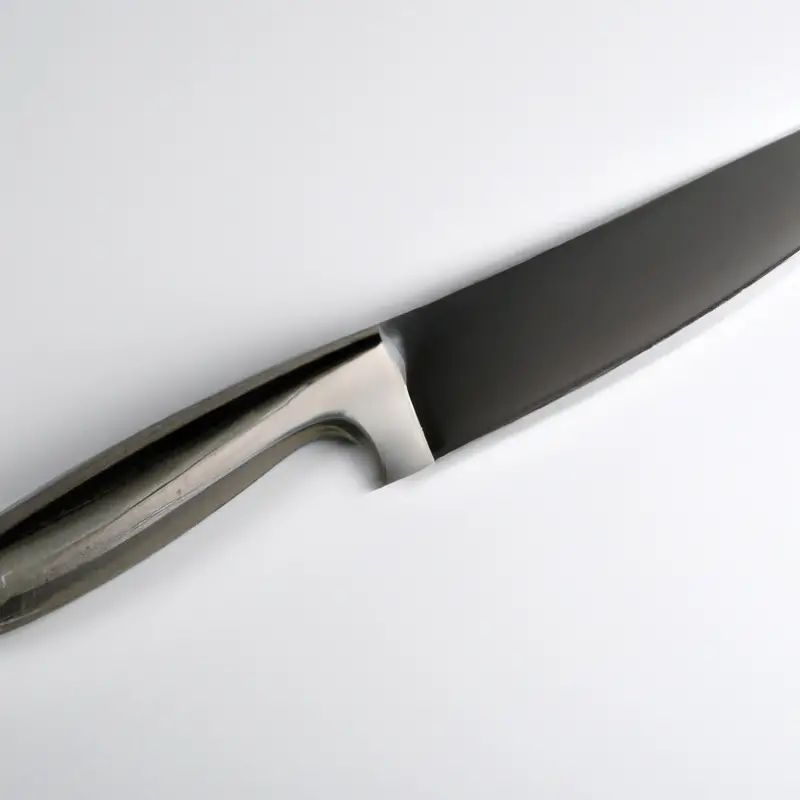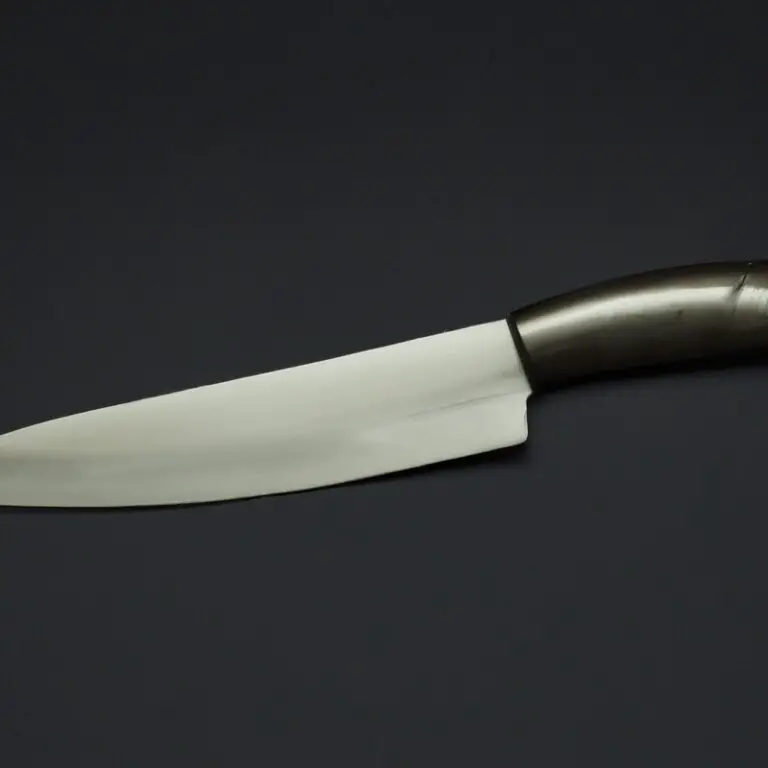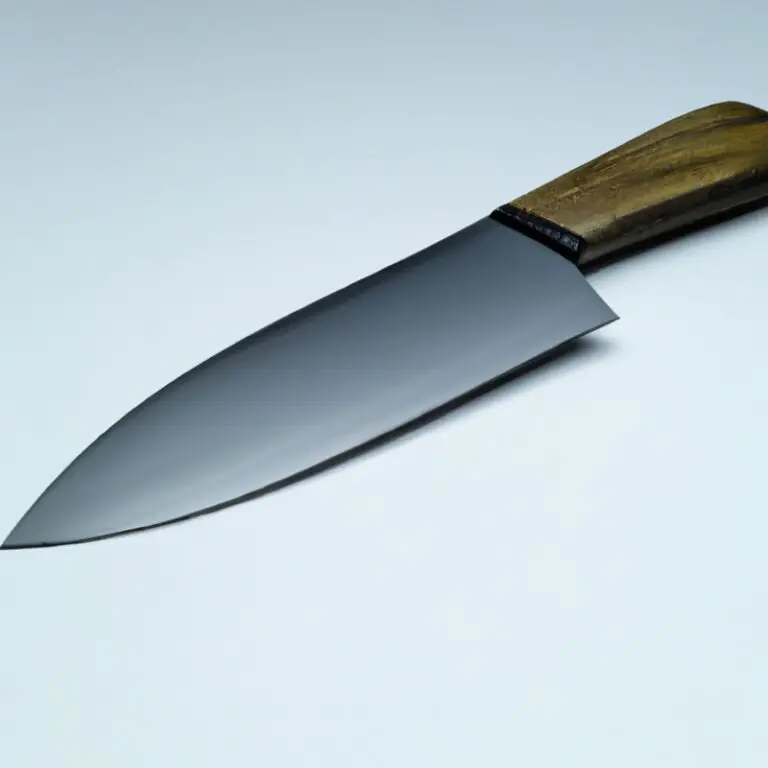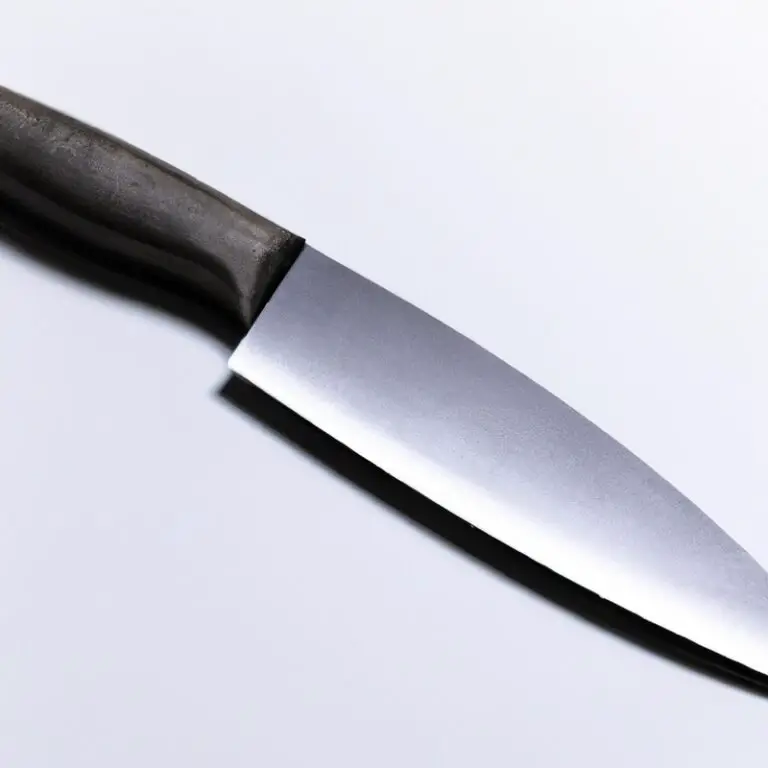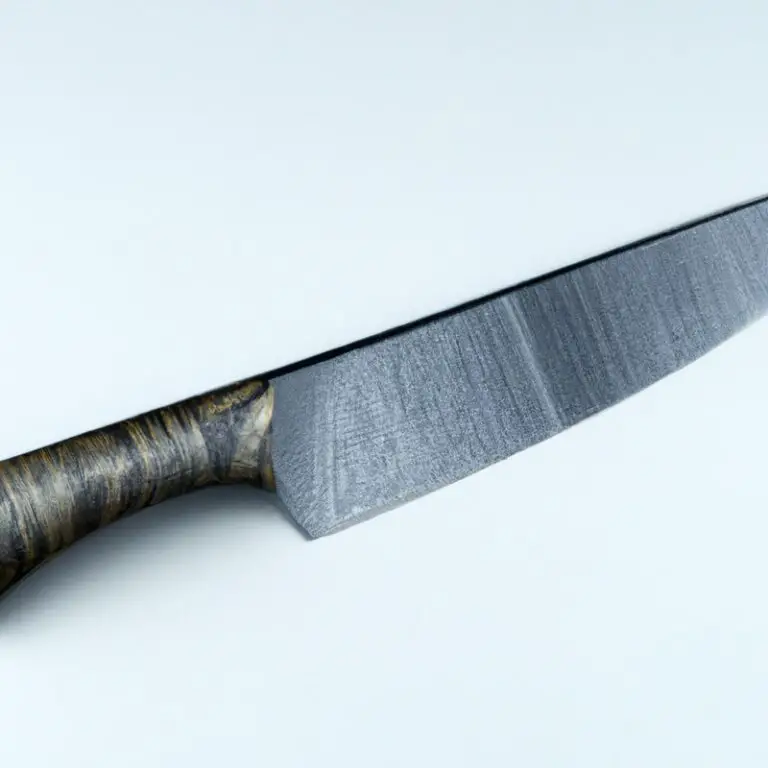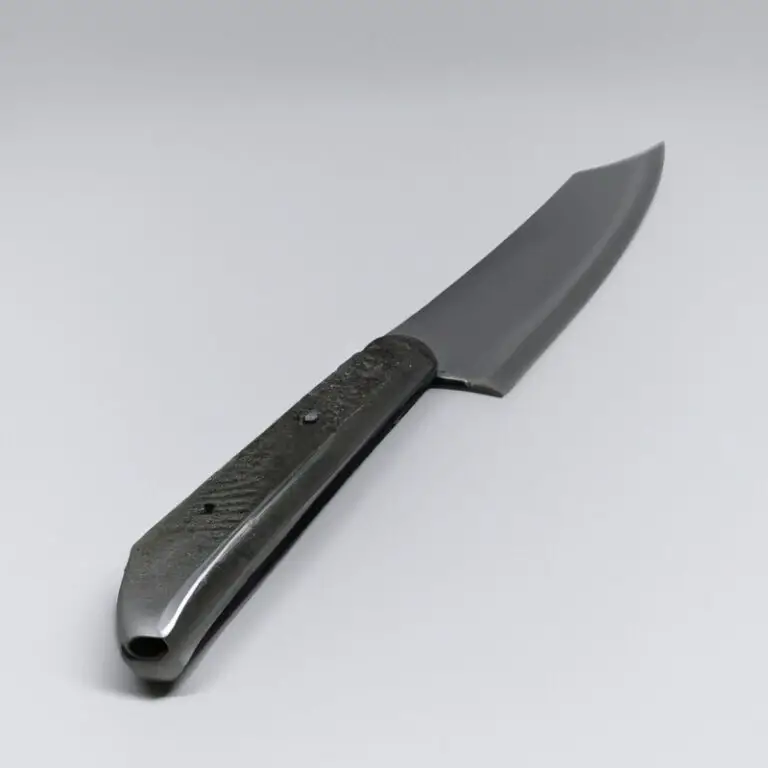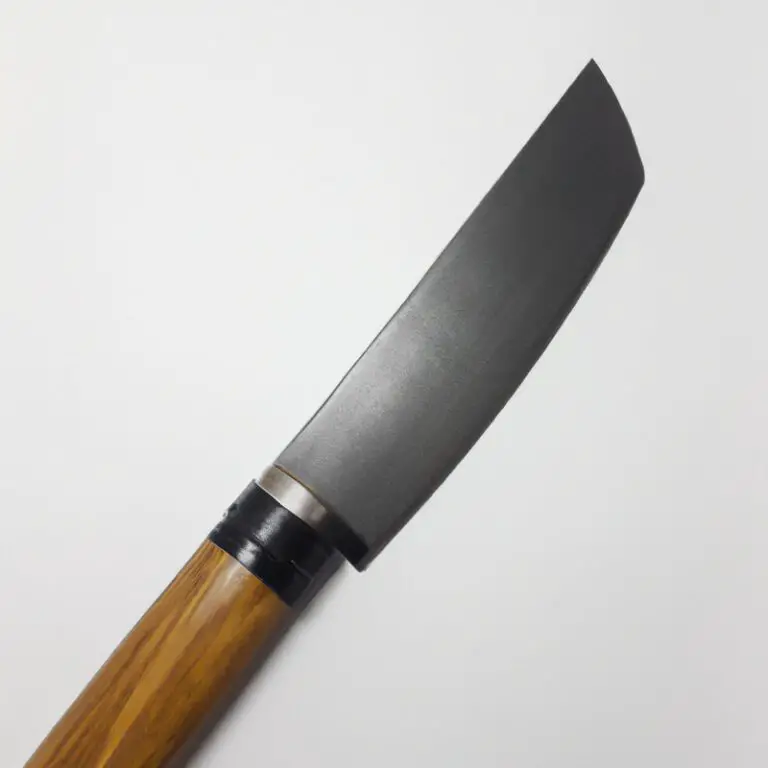How To Achieve Thin Strips For Stir-Frying With a Gyuto Knife? Masterfully
Key Takeaways:
- Achieving thin strips for stir-frying with a Gyuto knife requires proper technique and attention to detail.
- It’s important to select the right knife for the job – a sharp Gyuto knife is perfect for slicing meat and vegetables thinly.
- Use a rocking motion with your wrist to achieve a consistent thickness in your cuts and avoid applying excessive pressure.
- With practice and patience, mastering the art of thin slicing with a Gyuto knife can take your stir-fry game to the next level.
Are you tired of unevenly sliced vegetables and meats while stir-frying? Look no further than the Gyuto knife.
This Japanese chef’s knife is versatile and excels in precision cuts, making it ideal for achieving thin strips for stir-frying.
However, mastering the perfect cut with a Gyuto knife can be challenging. In this article, I will guide you through the different types of cuts and techniques necessary to achieve those thin slices.
We’ll cover everything from selecting the right blade to maintaining it properly, all while enhancing the flavors and textures of your stir-fried dishes.
| Method | Description |
|---|---|
| Freezing Method | Partially freeze meat for about 30-60 minutes before cutting. This firms up the meat and makes it easier to cut into thin strips. |
| Mandoline | A mandoline can be used to cut even and thin strips. Be careful with your fingers and use the guardrails. |
| Knife Technique #1: Slicing Against the Grain | Cut meat at a 90-degree angle against the grain, which will break down connective tissues and make it easier to cut into thin strips. Use a Gyuto knife held at a slight angle and apply pressure while cutting through the meat. |
| Knife Technique #2: Rocking Motion | Use a rocking motion with a Gyuto knife to cut thin strips. Apply light pressure while slowly and smoothly rocking back and forth. This technique requires practice and a sharp knife. |
Understanding the Gyuto Knife: An Introductory Guide
The Gyuto knife is a traditional Japanese chef knife that has become popular among home cooks worldwide. Its versatile design makes it ideal for a variety of kitchen tasks, including slicing thin strips for stir-frying.
Understanding the Gyuto knife is essential to achieve thin and even strips, as it features a narrow blade that tapers to a sharp point, allowing for precision cutting.
Additionally, its ergonomic handle offers a comfortable and secure grip, which is essential when handling sharp blades. Knowing the basics of the Gyuto knife and its design can help improve your cooking skills and make your meals more flavorful and visually appealing.
The Key to Effective Stir-Frying: Cutting Techniques with Gyuto Knives
Using the proper cutting technique when using a Gyuto knife is key to achieving thin strips for stir-frying. The most common technique is to hold the knife at a 45-degree angle and slice the ingredient thinly with a back-and-forth motion.
Another technique is to hold the ingredient with your non-dominant hand and slice with the knife at a 90-degree angle.
Remember to always maintain a firm grip and apply pressure evenly to achieve consistent cuts. Additionally, it is important to only cut through the ingredient once to prevent it from breaking apart during stir-frying.
Practice and patience are essential in mastering these techniques for optimal results.
Mastering the Basics: Different Styles of Knife Cuts for Stir-Frying
Mastering basic stir-frying cuts is essential to achieving evenly cooked and flavorful dishes. The most common cuts include julienne, matchstick, and diagonal.
Julienne: Cutting food into thin, uniform strips, approximately 1/8 inch wide and 2 inches long.
Vegetables and meats can be cut into julienne strips for quick cooking and even distribution in stir-fries. Matchstick: Similar to julienne, but the strips are thinner and more delicate, about 1/16 inch wide and 2 inches long.
Matchstick cuts look elegant in stir-fried dishes.
Diagonal: A cut made at a 45-degree angle, diagonally through the food. This cut is often used for softer vegetables such as onions and peppers, as it provides a larger surface area for cooking and allows for an appealing texture in stir-fries.
Practice is key to mastering these basic cuts.
Start by selecting fresh produce and a sharp Gyuto knife. Slice slowly and steadily, maintaining a consistent, safe grip.
With time and practice, you will be able to cut food into beautiful, even strips for stir-fried dishes that look and taste fantastic.
Sharpening Your Gyuto Knife to Perfection: Essential Tips and Tricks
To achieve precise and thin cuts for stir-frying, a sharp Gyuto knife is essential. Here are some essential tips and tricks for sharpening your Gyuto knife to perfection:
- Invest in a quality whetstone: A high-quality whetstone is necessary for sharpening your Gyuto knife. Look for a stone with a grit of at least 1000 for a finer edge.
- Prepare the whetstone: Soak the whetstone in water for 10-15 minutes before use. The water helps to prevent excessive heat during sharpening.
- Angle: Angle the blade at a 15-20 degree angle to the whetstone. Consistency of your angle throughout the sharpening process is important.
- Sharpening technique: Use smooth, circular motions to sharpen the blade. Maintain this same motion throughout the sharpening process.
- Honing rod: Using a honing rod after sharpening can help to straighten the blade’s edge, increasing sharpness.
By sharpening your Gyuto knife with these tips and tricks, you’ll have a blade that is perfect for achieving thin, precise cuts for stir-frying. Don’t forget to sharpen your knife regularly to maintain its sharpness.
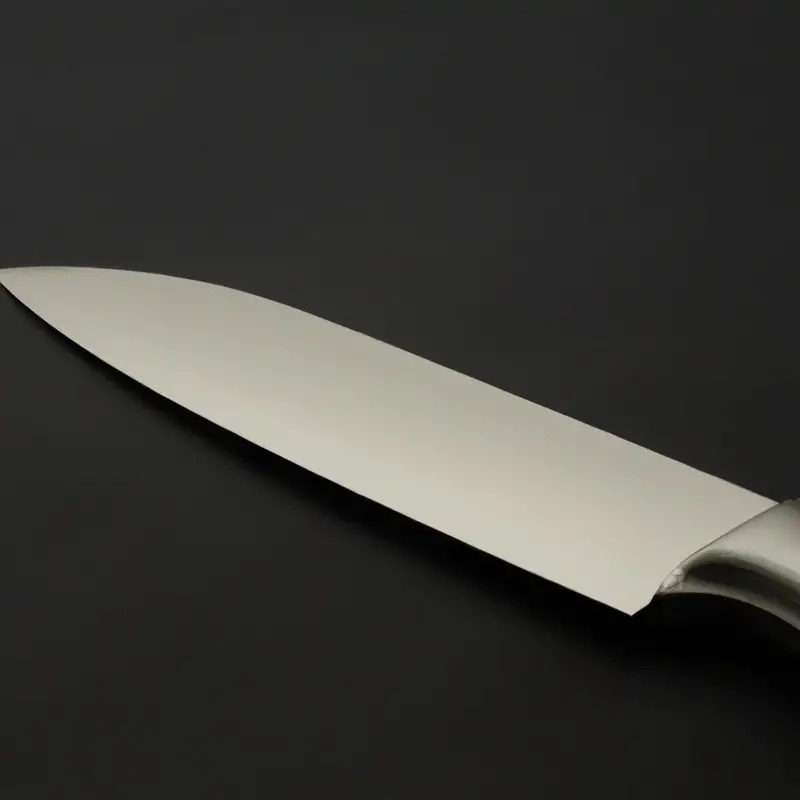
Choosing the Right Gyuto Knife: A Guide to Selecting the Perfect Blade for Stir-Frying
When selecting a Gyuto knife for stir-frying, consider the length, weight, and material of the blade. A 210mm to 240mm length is recommended for effective stir-frying.
A lighter blade allows for better control and agility, while a heavier blade is suitable for tougher ingredients.
When it comes to the materials, carbon steel and stainless steel are popular choices. Carbon steel blades hold their sharpness longer and are easier to sharpen, but they require more maintenance to prevent rusting.
Stainless steel blades are easier to maintain and more resistant to rust, but they may not hold their edge as long as a carbon steel blade.
Another consideration when selecting a Gyuto knife is the blade shape. A long, flat blade with a slight curve along the cutting edge is ideal for chopping and slicing vegetables, while a taller, curved blade with a pointed tip is better suited for protein and meat.
The handle of the knife should also be comfortable and easy to grip with a secure hold.
Ultimately, selecting the right Gyuto knife for stir-frying involves a balance of personal preference, functionality, and budget. It is recommended to try different knives before making a purchase and investing in a high-quality knife that will last for years to come.
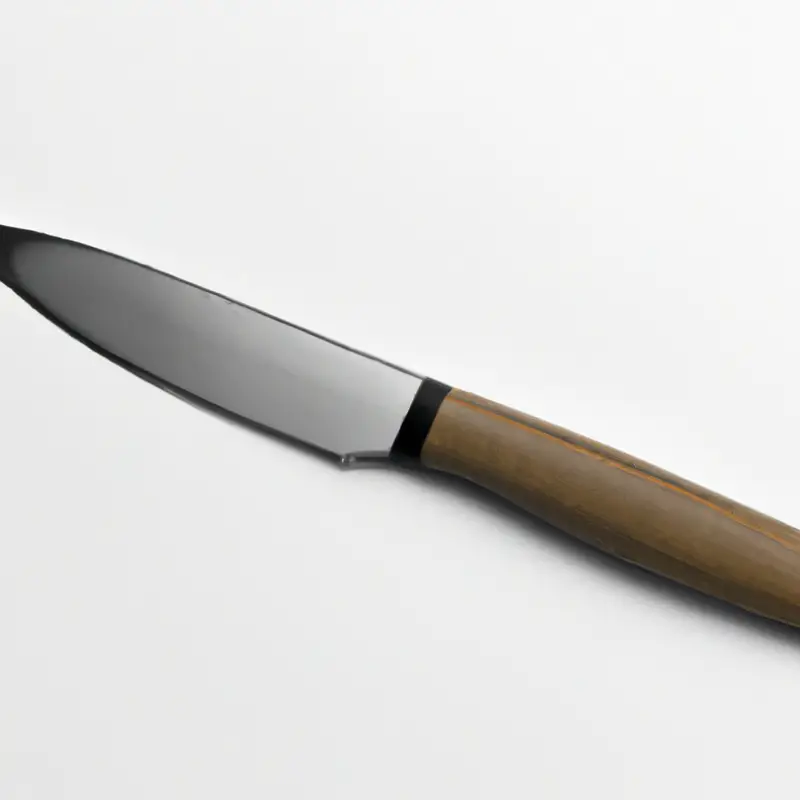
Prepping Your Ingredients: Techniques for Preparing Vegetables and Meats for Thin Slices
To achieve thin strips for stir-frying with a Gyuto knife, it’s important to prep your ingredients properly. Here are some techniques for preparing vegetables and meats for thin slices:
- Use a sharp knife: A sharp knife makes it easier to make thin and even slices. Make sure to sharpen your Gyuto knife before use.
- Slice across the grain: For meats, slicing against the grain (the direction of the muscle fibers makes the slices more tender and easier to cut. Look for the lines in the meat fibers and cut perpendicular to them.
- Chill meat: To make slicing meat easier, chill it in the freezer for 10-15 minutes before cutting. This allows the meat to firm up and makes it easier to get thin slices.
- Cut vegetables evenly: Use a mandoline or knife to make thin and even cuts for vegetables like carrots, onions, and peppers. This ensures they cook evenly and at the same rate.
- Blanch vegetables: Blanching (quickly boiling and then cooling vegetables like green beans or broccoli before slicing can make them easier to cut into thin slices.
By using the right techniques to prepare your ingredients, you’ll be able to achieve thin strips for stir-frying with your Gyuto knife.
Proper Grip and Technique: How to Hold and Use a Gyuto Knife for Thinner Slices
Proper grip and technique are crucial when using a Gyuto knife for thinner slices. To achieve thin slices, hold the knife with a pinch grip, placing your thumb and index finger behind the blade where it meets the handle.
This allows for better control and precision during cutting.
When making thin slices, use a rocking motion with the knife, keeping the tip touching the cutting board as you move the blade back and forth. Practice your technique with slower cuts at first to build confidence and accuracy.
It’s important to keep the blade at a consistent angle and maintain even pressure to avoid uneven cuts.
Take breaks as needed to readjust your grip and posture to reduce fatigue and prevent injury. Remember to always prioritize safety when using sharp knives, and never rush when cutting.
Consistency and practice are key in achieving perfect cuts for your stir-fry.
Maintaining Your Gyuto Knife for Longevity: Cleaning and Maintenance Tips for Optimal Performance
To maintain the longevity of your Gyuto knife and ensure optimal performance, it’s crucial to clean and maintain it properly. Here are some quick tips for cleaning and maintaining your Gyuto knife:
- Clean your knife immediately after use with a mild dish soap and warm water.
- Dry your knife thoroughly with a clean towel or cloth to prevent rust and corrosion.
- Avoid using abrasive materials for cleaning, such as steel wool or harsh cleaning agents.
- Use honing steel to maintain the knife’s sharp edge.
- Store your Gyuto knife in a knife block or sleeve to prevent damage and keep it in optimal condition.
By following these simple tips, you can maintain the performance and longevity of your Gyuto knife and ensure that it stays sharp and effective for your stir-frying needs.
Advanced Techniques for Perfect Slices: Tips for Achieving Thin Cuts with Gyuto Knives
To achieve thin slices with a Gyuto knife, there are advanced techniques you can employ. These include:
- The pinch grip technique, where you grip the base of the blade with your thumb and forefinger and use the rest of your fingers to guide the knife. This grip provides better control for thinner slices.
- The rocking technique, where you place the tip of the knife on the surface and rock it back and forth as you slice through the ingredient. This prevents the blade from getting stuck and allows for a smoother cut.
- The roll-cutting technique, where you cut the ingredient at an angle and then turn it and cut again at an angle in the opposite direction. This method is effective for long, thin slices.
- The pull-cutting technique, where you pull the knife towards you rather than pushing it away. This method results in thinner slices and reduces the risk of injury.
By practicing these techniques, you can achieve perfect thin slices for stir-frying with your Gyuto knife.
Enhancing Flavor and Texture: Best Practices for Stir-Frying with Thin Strips
To enhance flavor and texture when stir-frying with thin strips, it’s important to use high heat and cook quickly. Make sure to fully heat your pan before adding oil and your ingredients.
Stir-fry vegetables first before adding meat, and cook in batches to prevent overcrowding the pan.
Season your ingredients with salt, soy sauce, or other seasonings as desired. Lastly, consider adding aromatics like garlic and ginger, as well as a splash of vinegar or citrus juice to enhance the overall flavor profile.
Final Verdict
Achieving thin strips for stir-frying requires the right technique, a sharp Gyuto knife, and proper grip. By mastering the basic cuts, choosing the right blade, and prepping your ingredients adequately, you will be able to create delectable stir-fry dishes that are bursting with flavor and texture.
Remember to maintain and sharpen your knife regularly, and use advanced techniques to perfect your slicing skills over time.
With these insights, you can prepare restaurant-quality meals in the comfort of your home. Trust in the power of your Gyuto knife to elevate your cooking experience and enjoy the countless benefits that come with mastering this versatile and essential kitchen tool.

